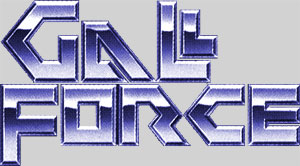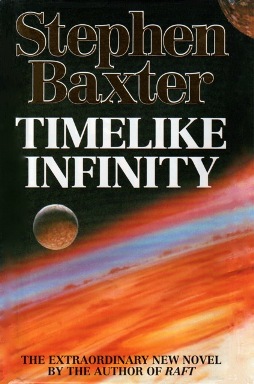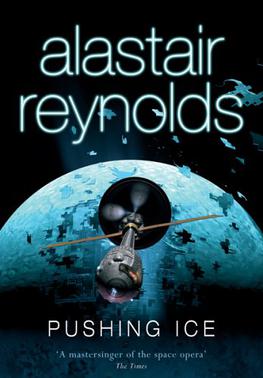
Spaceflight is an application of astronautics to fly objects, usually spacecraft into or through outer space, either with or without humans on board. Most spaceflight is uncrewed and conducted mainly with spacecraft such as satellites in orbit around Earth, but also includes space probes for flights beyond Earth orbit. Such spaceflight operate either by telerobotic or autonomous control. The more complex human spaceflight has been pursued soon after the first orbital satellites and has reached the Moon and permanent human presence in space around Earth, particularly with the use of space stations. Human spaceflight programs include the Soyuz, Shenzhou, the past Apollo Moon landing and the Space Shuttle programs. Other current spaceflight are conducted to the International Space Station and to China's Tiangong Space Station.
A sleeper ship is a hypothetical type of crewed spacecraft, or starship in which most or all of the crew spend the journey in some form of hibernation or suspended animation. The only known technology that allows long-term suspended animation of humans is the freezing of early-stage human embryos through embryo cryopreservation, which is behind the concept of embryo space colonization.

Colonization is a trilogy of alternate history books by American writer Harry Turtledove. It is a series continuation of the situation set up in the Worldwar tetralogy, projecting the situation between humanity and The Race nearly twenty years afterward, in the mid-1960s.

Footfall is a 1985 science fiction novel by American writers Larry Niven and Jerry Pournelle. The book depicts the arrival of members of an alien species called the Fithp that have traveled to the Solar System from Alpha Centauri in a large spacecraft driven by a Bussard ramjet. Their intent is conquest of the planet Earth.
The concept of self-replicating spacecraft, as envisioned by mathematician John von Neumann, has been described by futurists including physicist Michio Kaku and discussed across a wide breadth of hard science fiction novels and stories. Self-replicating probes are sometimes referred to as von Neumann probes. Self-replicating spacecraft would in some ways either mimic or echo the features of living organisms or viruses.
A bioship is a type of spacecraft or starship described in science fiction as either predominantly or totally composed of biological components, rather than being constructed from manufactured materials. Because of this, they nearly always have a distinctively organic look.

Gall Force is a metaseries of science fiction anime OVAs by the studios Artmic and AIC, with production by Youmex. The original character designs were by Kenichi Sonoda, though these were dropped for the Gall Force: The Revolution remake. Central Park Media has licensed most of the films and OVAs with the exceptions of Ten Little Gall Force, Scramble Wars, and The Revolution.

Marooned in Realtime is a 1986 murder mystery and time-travel science fiction novel by American writer Vernor Vinge, about a small, time-displaced group of people who may be the only survivors of a technological singularity or alien invasion. It is the sequel to the novel The Peace War (1984) and the novella The Ungoverned (1985). Both novels and the novella were collected in Across Realtime.
The zoo hypothesis speculates on the assumed behavior and existence of technologically advanced extraterrestrial life and the reasons they refrain from contacting Earth. It is one of many theoretical explanations for the Fermi paradox. The hypothesis states that alien life intentionally avoids communication with Earth to allow for natural evolution and sociocultural development, and avoiding interplanetary contamination, similar to people observing animals at a zoo. The hypothesis seeks to explain the apparent absence of extraterrestrial life despite its generally accepted plausibility and hence the reasonable expectation of its existence. A variant on the zoo hypothesis suggested by the former MIT Haystack Observatory scientist John Allen Ball is the "laboratory" hypothesis, in which humanity is being subjected to experiments, with Earth serving as a giant laboratory.

Timelike Infinity is a 1992 science fiction book by British author Stephen Baxter. The second book in the Xeelee Sequence, Timelike Infinity introduces a universe of powerful alien species and technologies that manages to maintain a realistic edge because of Baxter's physics background. It largely sets the stage for the magnum opus of the Xeelee Sequence, Ring.
The Commonwealth Saga is a series of science fiction novels by British science fiction writer Peter F. Hamilton. This saga consists of the novels Pandora's Star (2004) and Judas Unchained (2005). Hamilton has also written several books set in the same literary universe. Misspent Youth (2002) takes place 340 years before the events of Pandora's Star. The Void Trilogy, consisting of The Dreaming Void (2008), The Temporal Void (2009), and The Evolutionary Void (2010), takes place 1,200 years after the events of Judas Unchained; several of the main characters from Judas Unchained and Pandora's Star also appear in the Void trilogy.

Pushing Ice is a 2005 science fiction novel by Welsh author Alastair Reynolds. According to Reynolds' Web site, the story takes place in a different universe from his Revelation Space stories.
The Alliance–Union universe is a fictional universe created by American writer C. J. Cherryh. It is the setting for a future history series extending from the 21st century into the far future.

Dread Empire's Fall is a space opera novel series, written since 2002 by the American author Walter Jon Williams.
The planetary systems of stars other than the Sun and the Solar System are a staple element in many works of the science fiction genre.

Ancient astronauts have been addressed frequently in science fiction and horror fiction. Occurrences in the genres include:

Death's End is a science fiction novel by the Chinese writer Liu Cixin. It is the third novel in the trilogy titled Remembrance of Earth's Past, following the Hugo Award-winning novel The Three-Body Problem and its sequel, The Dark Forest. The original Chinese version was published in 2010. Ken Liu translated the English edition in 2016. It was a finalist for the 2017 Hugo Award for Best Novel and winner of the 2017 Locus Award for Best Science Fiction Novel.










